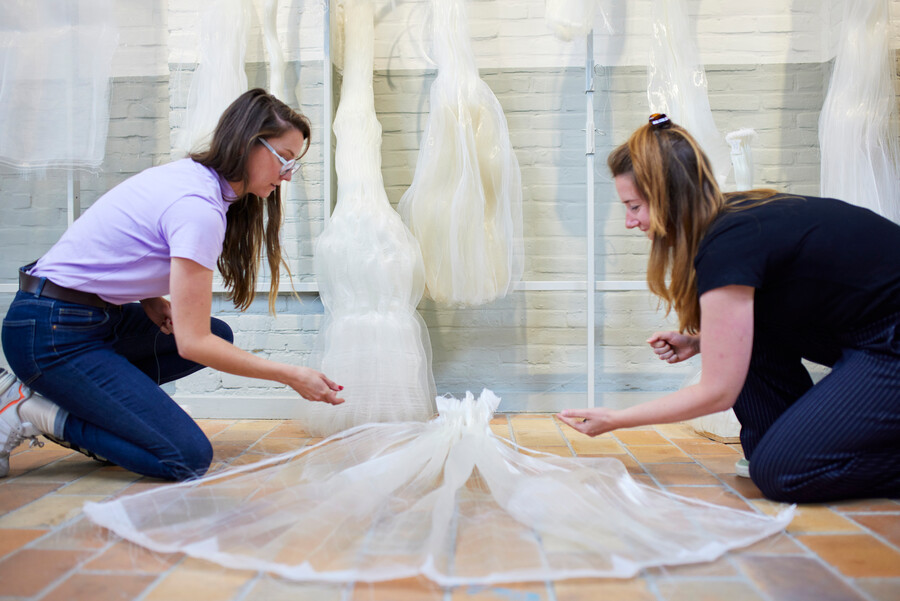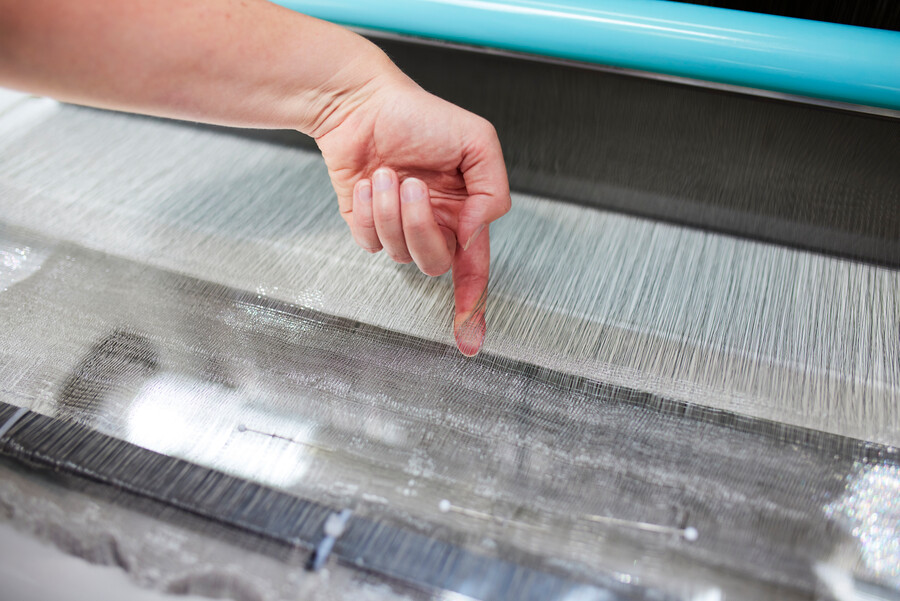A field of graceful stalks that sway gently back and forth as you walk through it: this is ‘As if I was the wind’ by Studio Drift, which will be shown to the public for the first time this autumn. The development of the interactive work acted as a catalyst for more in-depth research into constructive weaving.
‘As if I was the wind’ will go on display in the autumn as part of the exhibition Is it alive? The story behind the development of these interactive works goes beyond a regular museum commission. The self-supporting moving blades are one of the results of an intensive R&D process that focuses on technological innovation. Supported by a BIS government subsidy for cultural institutions, the TextielLab and Studio Drift researched the development of self-supporting structures made from woven fabric. The research builds on a series of experiments that designers and product developers first embarked on two years ago. As this research process is ongoing, the surprising discoveries resulting from these experiments will continue to grow.
Thread Controller 2
It has always been our explicit intention to share the results of this research with other interested makers. However, this is the first time that we will showcase what we have been working on. “Our R&D process allows the team to delve deeply into a specific topic, to experiment widely and to respond continuously to each other’s input. The idea behind a commission like this is that it will eventually result in a work for the museum’s collection while simultaneously driving innovative development in the lab. But it takes time before this kind of complex development process produces something that subsequent makers can use,” says project leader Noortje van den Elzen. She explains how research into new materials and techniques on a hand loom quickly led to the purchase of the Thread Controller 2 (TC2). This small jacquard loom can be operated manually but can also weave a digital design. This makes it ideal for experimentation, because you can carry out small tests on it before moving on to the ‘real’ work on the larger looms. The TC2 is warped manually. This takes an entire week but is still five times faster than warping one of the large Dornier looms.

Yarn specialist Vera de Pont and product developer Judith Peskens working on ‘As if I was the wind’. Photo Tommy de Lange
“If we succeed, we will be the first to offer jacquard weaving with metal”
Metal
The warp came to play an important role in the R&D process. When inspecting one of Studio Drift’s 3D shapes made with a metal wire weft, product developer Judith Peskens had the idea of trying a metal warp. This could create a woven object that was strong enough to support itself. Through trial and error, the team tested warps made of stainless steel, copper and aluminium on the TC2. When, for aesthetic reasons, Studio Drift opted for a supported structure of polyester monofilament for ‘As if I was the wind’, Peskens continued to make replicas of the samples in metal. This urge to innovate more than proved itself: the results were so rewarding that the team decided to continue experimenting with a metal warp.

Metal warp and weft on the TC2 loom. Photo Tommy de Lange
Exterior applications
Peskens is excited about the possibilities. “As far as we know, jacquard weaving with metal hasn’t been done anywhere else,” she says. “It took us a long time to get a hang of the warp on the TC2, as metal behaves completely differently from textile. I’m really pleased that we were successful, and that we can now weave shapes made entirely of metal.” The team is currently looking at whether the process can be scaled up to a larger computer-controlled loom. Various adjustments have already been made to the Dornier 170 loom, so that it can be warped with metal yarn in the autumn. Studio Drift has been asked to come up with new scenarios for testing. “We’re looking for applications that do justice to the specific properties of metal,” says Peskens. “Metal is both flexible and strong, it can conduct heat and electricity, it’s fireproof and weather resistant. That makes it particularly suitable for architectural and exterior applications.”
Promising
In the coming months, we will continue to investigate all the possibilities of a metal warp. If the experiments lead to interesting results, the lab aims to make weaving with metal available to more makers, says Van den Elzen. For now, it is limited to the R&D team. “We first need to investigate thoroughly what can and can’t be done and how. It will take some time before this becomes accessible to everyone. But if we succeed, we will be the first to offer jacquard weaving with metal. And the results so far are promising.”